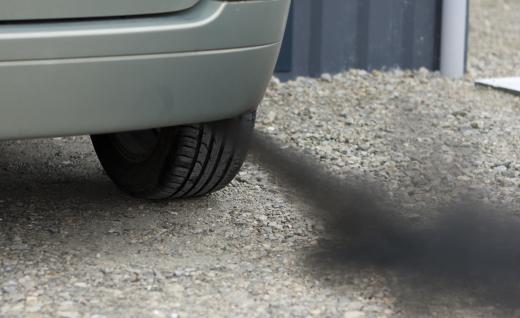Emissions are thought to be linked to global warming, air pollution, and water pollution. In order to control negative effects on the environment, lower emissions may be necessary. With a plan to reduce carbon emissions, the transportation industry, businesses, and local governments are researching better fuels with lower greenhouse gas emissions.
Greenhouse gases are emitted when fossil fuels are burned. The resulting gases are collected in the atmosphere, causing warmer air to be trapped within the ozone layer. With a rise in temperature, the warming effect on the environment is thought to be the same as placing the earth in a greenhouse, thus the term greenhouse gases. Lower emissions could stop the warming of the Earth and the greenhouse effect.

Most cars burn fossil fuels, primarily in the form of gasoline, on a daily basis. When gasoline is burned, carbon dioxide is released into the air. This carbon dioxide is used by plants and tress for photosynthesis, but when too much carbon dioxide is emitted, climate change can occur. Currently, human transportation is thought to be responsible for the majority of the carbon emissions affecting climate.

Research into alternative fuels like switchgrass ethanol and E85 ethanol is currently underway. These are being created as replacement fuels for automobiles and both result in far less carbon dioxide emissions into the atmosphere. Currently, the actual production of ethanol from corn creates a larger than expected amount of greenhouse gas. In order to reduce these emissions, the factories producing this alternative fuel may need to lower their impact on the environment as well.

Methane, another greenhouse gas, is released into the atmosphere primarily from landfills. Landfills are large open spaces used to dump trash and unwanted items. When this trash decays, methane is released and, as methane collects in the atmosphere, climate change can occur.
Reducing the amount of waste per household can lower emissions of methane from landfills. Recycling and the use of biodegradable materials in the home are two methods that can be used to reduce household waste. Biodegradable materials break down far more quickly, resulting in a smaller effect on the environment.
Many businesses are also trying to lower emissions by choosing green alternatives in the workplace. The term green is commonly used for products that have lower emissions and therefore a smaller carbon footprint on the environment. Carbon footprint is the term used to describe the long-term effect a product has on the Earth. A smaller carbon footprint can be the same as fewer carbon emissions.
